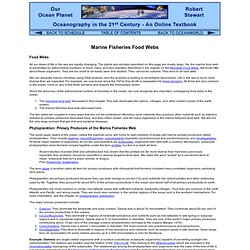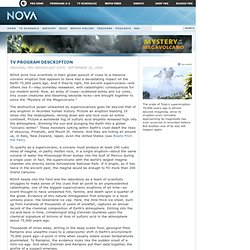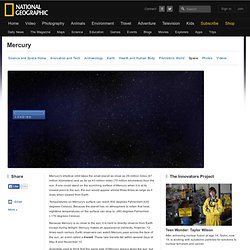

Volcano Power. Endangered Species. You are currently in your regular groups of four.

First, you will split up into subgroups of two to begin this project. Two of you will be assigned the role of Biological Scientists. The other two people will be assigned the role Environmental Scientists. You will regroup for the last part of your assignment. Before you divide into your subgroups, please take a moment to view STEP TWO and the Group Questions attachment. Role 1: Biological Scientists: The Lesson Plans Page - Over 4,000 FREE Lesson Plans! CFFScience - home. Add audio to presentations. Global Warming. First Mammal Species Goes Extinct Due to Climate Change The humble Bramble Cay melomys has disappeared from its island in the Great Barrier Reef.

Climate Change Making Calendars Run Amok People in Central Asia are recalibrating their system of time to adapt to a changing ecosystem. The Great Energy Challenge The National Geographic initiative is a call to action to become actively involved, to learn more and do more—to change how we think about and consume energy so that we can all help tackle the big energy questions. U.S.'s First Official Climate Refugees Race Against Time A Native American tribe struggles to hold on to their culture while their land slips into the Gulf of Mexico. Access Middle School! Free, virtual field trips, exhibits, and camera ... NASA - JPL Solar System Simulator. Discovery Channel : Science, History, Space, Tech, Sharks, News.
Marine Food Webs. Marine Fisheries Food Webs Food Webs All our ideas of life in the sea are rapidly changing.

The plants and animals described on this page are mostly large. Yet, the marine food web is dominated by astronomical numbers of micro, nano, and pico plankton described in the chapter on the Microbial Food Webs. Lessons. Photovisi - Collage photo effects. Mystery of the Megavolcano. NOVA joins four scientists in their global pursuit of clues to a massive volcanic eruption that appears to have had a devastating impact on the Earth 75,000 years ago.

And if they're right, the ancient supervolcano—and others like it—may someday reawaken, with catastrophic consequences for our modern world. Classroom 2.0. Website. Ocean Facts. Interesting Ocean Facts Area: about 140 million square miles (362 million sq km), or nearly 71% of the Earth's surface.

Average Depth: 12,200 feet (3,720 m). Deepest point: 36,198 feet (11,033 m) in the Mariana Trench in the western Pacific. Mountains: The ocean ridges form a great mountain range, almost 40,000 miles (64,000 km) long, that weaves its way through all the major oceans. It is the largest single feature on Earth. NETS Implementation - Critical Thinking, Problem Solving, and Decision ... Language Learning with Livemocha. Immunology Course Materials and Animations at Davidson College. 9(e) Abiotic Factors and the Distribution of Species. Geographic Range Each species on our planet occupies a unique geographic range where the members of its various populations live, feed, and reproduce.

Some species have extensive geographic ranges that stretch over several continents. Species with such distributions are known as cosmopolitan species. Other species can have more restricted geographic ranges isolated to a small area on a single continent. This type of distribution is termed endemic. Geographic ranges of organisms continually shift, expand, and contract with the passage of time. Photosynthesis, Energy, and Life - Photosynthesis keeps life going. MOTIVATING STUDENTS. Microscope Imaging Station. Gallery. Mercury, Planet Mercury Information, Facts, News, Photos. Mercury's elliptical orbit takes the small planet as close as 29 million miles (47 million kilometers) and as far as 43 million miles (70 million kilometers) from the sun.

If one could stand on the scorching surface of Mercury when it is at its closest point to the sun, the sun would appear almost three times as large as it does when viewed from Earth. Temperatures on Mercury's surface can reach 800 degrees Fahrenheit (430 degrees Celsius). Because the planet has no atmosphere to retain that heat, nighttime temperatures on the surface can drop to -280 degrees Fahrenheit (-170 degrees Celsius).
Because Mercury is so close to the sun, it is hard to directly observe from Earth except during twilight. Mercury makes an appearance indirectly, however, 13 times each century. Geology Virtual Field Trips at Internet 4 Classrooms. FROGS. BIOL 238 Anatomy & Physiology II - Class Notes. Glogster EDU - 21st century multimedia tool for educators, teachers and students. Glogster Tutorial. Education World ® Technology Channel: Visual Literacy: Hooked on Glogster: Posters 2.0. Hooked on Glogster: Posters 2.0 Even though my five children have long since completed elementary and middle school, many recollections from their school years linger in my memory.

Take Project Posters, for example. Many a Sunday night, Id be settling back in my chair to read the newspaper, and around the corner would come one of my children. I have to make a poster for social studies (or science or language arts) and its due tomorrow! " Home. RubiStar Home. K-12 Education & Learning Innovations with Proven Strategies that Work. Watch NOVA Programs Online. Video Format: Full Episode Running Time: